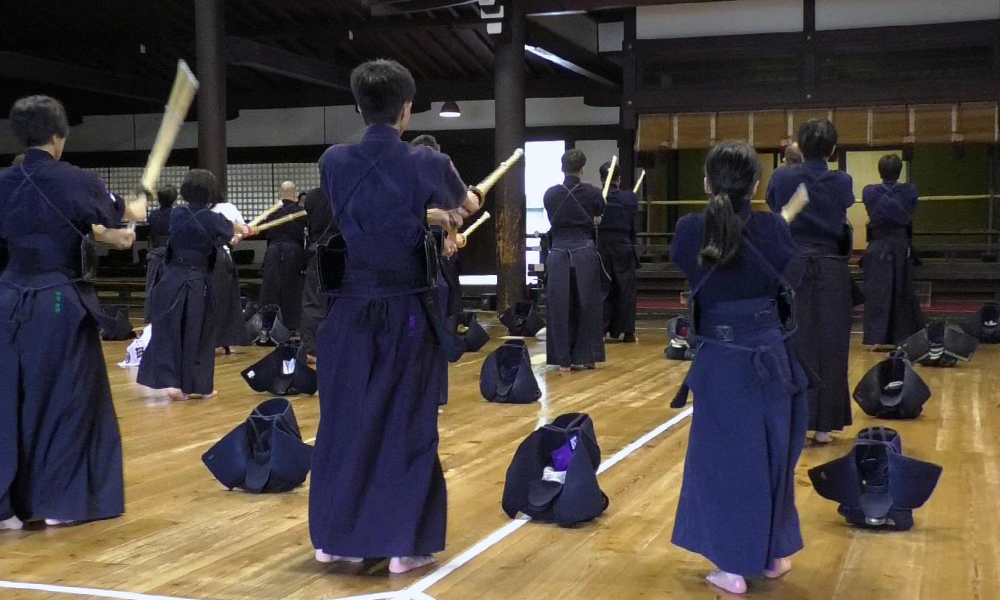
Air strokes have “one act”, “two act”, and “three act” versions using the wooden sword as well as a method using the shinai called “kiri-kaeshi” where you wear the mask and do it with an opponent. This article will focus on the “three act” version and list some things that are common to all.
The “three act” begins with a middle guard posture then swinging the sword upward above your head, sliding your foot forward while calling “EI” and then shouting “YA” as you swing your sword downward in front of your mask, then yelling “TOU” as you move one step back into the original middle guard posture.

One thing to be careful of is for the edge of the sword to not go lower than your hands holding it. Next, when you call “YA” imaging wringing a cloth. Both of your elbows should be pointed out and your wrists should snap. With the call of “TOU” you move back to the middle guard posture.
One thing that is common to the “one act”, “two act” and “kiri-kaeshi” as well is that when you make each call you should say it from your stomach and that when you swing your sword (wooden or shinai) upward from the middle guard posture that the edge of the sword should not go below the hands holding the sword, and that when you swing downward that both your elbows are stretched and that you are imagining wringing a cloth.

If you think of the total strength of holding the sword during the air stroke and the still position as 10, 7 should be on your left hand and 3 on your right. Your left hand needs more strength, and this should be remembered for any type of posture or air stoke.
Since many people are right-handed, you can train your left hand by doing air strokes only with the left hand or practicing snapping using beer bottles. This will help you master the air stroke better.

 | Did you like what you've just read? Check this out. |








